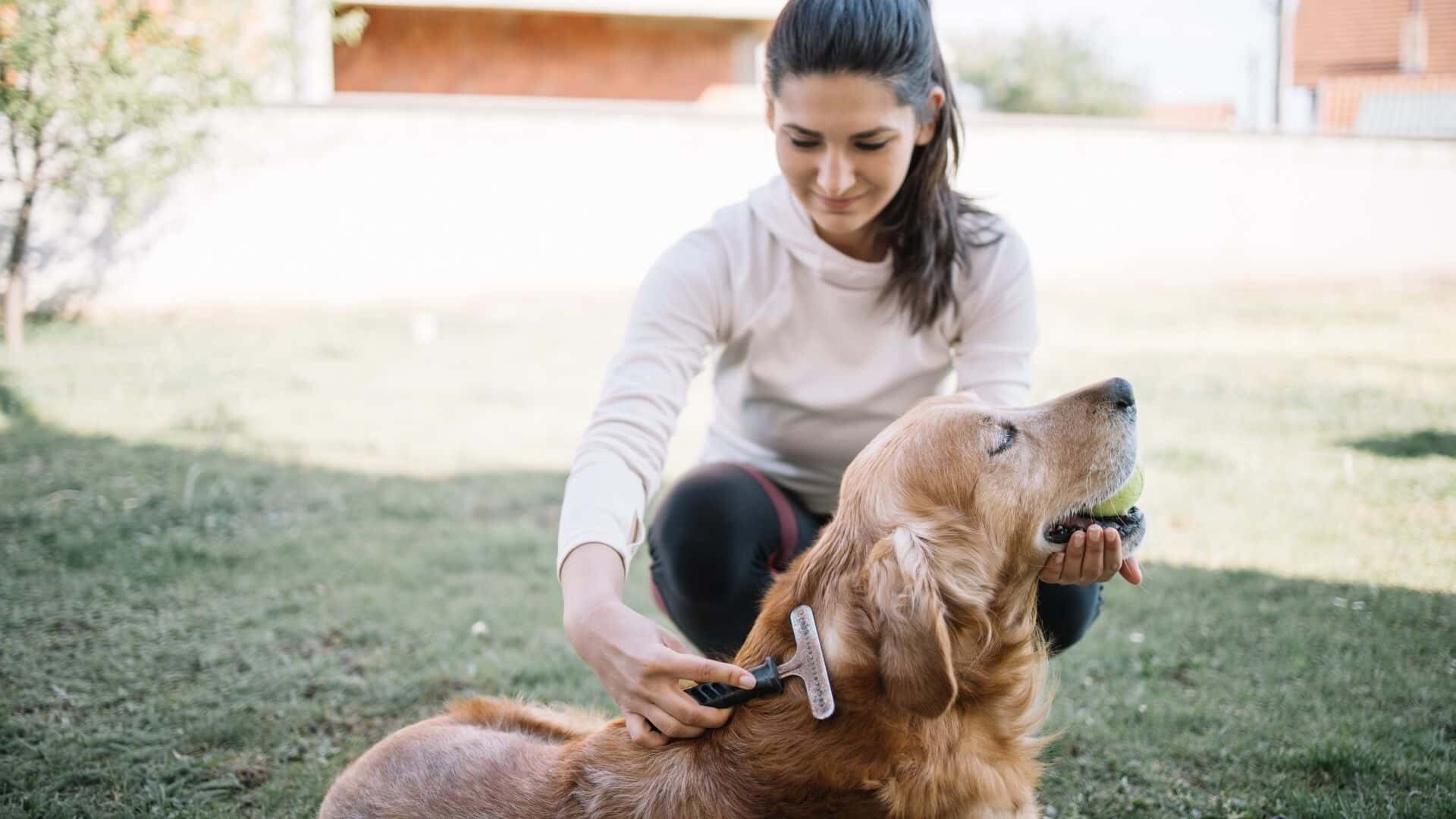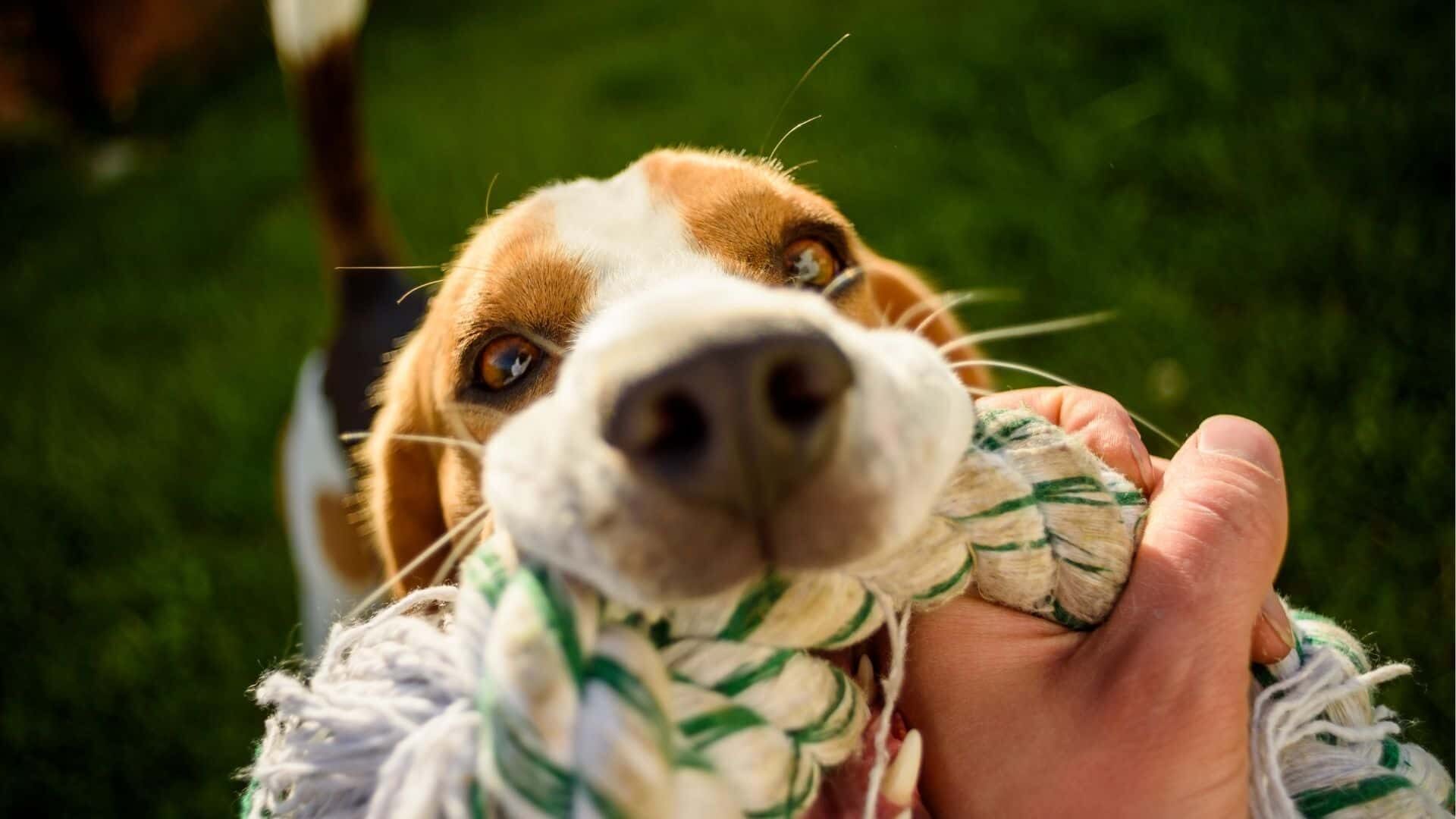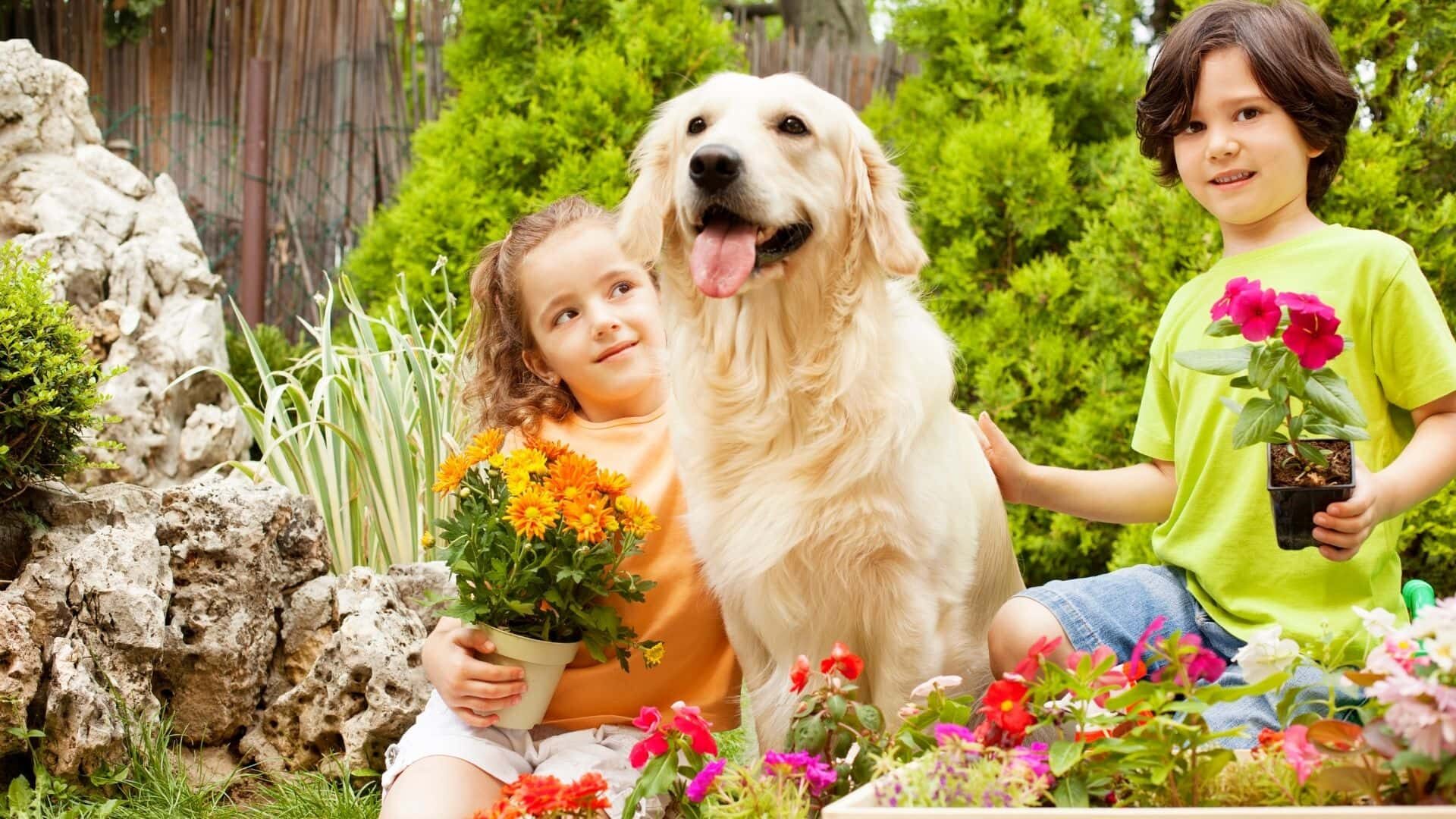Aside from “where on earth do I put all my stuff,” one of the most difficult decisions about living in a small house is whether or not I have enough space to invite a friend with fur, four paws, and a tail to live with me. You’re going to want to give that super cute little fur ball everything it deserves and more when you’re looking to adopt a dog, aren’t you? So, will a small, possibly garden-less space suffice? Is it possible to adopt a dog if you live in a flat?
Obviously, there are some important things to consider before you head down to your nearest dog rescue center and fall head over heels in love with every last pup in the place. Adopting any dog entails a significant amount of responsibility. It’s critical to consider whether you’ll be able to give the new furry addition to your family the attention it requires.
Getting a pet is a significant financial commitment. Not only do you have to pay for food on a daily basis, but you also have to pay for vet bills, which can be costly if your pet becomes ill. Then there are some very important small-space-specific steps to take before bringing a dog into your flat. So, before you take the next step, here’s a comprehensive guide to what you should consider before inviting a four-legged friend to live with you.
Is it possible to keep a dog in a flat?

Yes, you can keep a dog in a flat, but it all depends on the dog, just as the amount of exercise and space a dog requires varies according to breed.
Dogs make excellent pets. They make excellent companions and can be extremely entertaining. Maybe you’ve always wanted a dog but thought your flat wasn’t the right place for one.
You and your dog can live happily in your flat if you choose the right dog and commit to making it work. You can also assist your current dog in adjusting to a new environment. There are several things you can do to keep yourself and your dog healthy in your flat, such as:
- Dogs live in dens. This means that they prefer to have a defined space that is solely theirs. Make a safe haven for your dog to enjoy some alone time.
- Think about crate training your dog. Your pet can be kept in the crate while you are at work or elsewhere when you are not at home.
- Consult your veterinarian about the best type and size of crate for your pet. Smaller dogs will benefit from a smaller crate.
- You can also be creative when building a dog den. Try putting his dog’s bed beneath a table. This can be a safe haven for him to curl up in.
- Don’t forget to talk to your landlord as well. Before bringing a dog into a flat, you should check the rules. Pets are not permitted in some buildings. Others have specific rules. Inquire with your landlord about any pet restrictions. Make certain to obtain specifics. Dogs, for example, maybe permitted. Inquire about any breed or weight restrictions.
How can you keep your dog safe if you don’t have a garden?
Dogs make excellent pets. They make excellent companions and can be extremely entertaining. Maybe you’ve always wanted a dog but thought your flat wasn’t the right place for one.
Your dog can live safely in your home without a garden if you choose the right dog and commit to making it work. You can also assist your current dog in adjusting to a new environment. You can take several precautions to keep you and your dog safe and healthy in your flat.
1. Creating a dog-friendly environment
You should make each room safe for your dog in order to keep him safe and healthy. You will need to dog-proof your flat whether you have a new puppy or a canine companion you have had for years. Your first step should be to ensure that the entire area is safe for your dog. Examine each room in the flat to ensure that it is dog-friendly.
Lower cabinets in the kitchen and bathroom should be secured with child-proof latches. Small paws should not be able to open cabinets containing cleaning supplies or medication.
Secure any loose or dangling wires in other rooms. Chewing on these is dangerous for dogs. Keep houseplants out of reach of dogs as they frequently chew on potentially harmful plants.
2. Establish boundaries
Structure appeals to dogs. A good dog owner will set rules and guidelines for his or her dog. This is especially useful if you share a small space with others.
Determine whether your dog is permitted to use the furniture. This is a personal choice, but it is one you must make as soon as you bring the dog into the flat. Make it clear if the dog is not permitted on the furniture. To keep him off the couch, use clear commands and signals.
3. Shut the windows in your flat
Another issue to consider when leaving pets alone at home is their access to open windows. “We see a lot of cats and dogs falling out of windows,” says one observer.
Before you leave the house, make sure that all of the windows are securely closed and locked. This will keep your dog from escaping through an open window or jumping through a screen. If you must leave your windows open for ventilation, secure them so that they can only open a few inches while you are away.
4. Housebreak your dog
Even if the dog is housebroken, living in a flat can be challenging. Make it clear to your dog that when you go for walks that are the time for him to urinate and defecate. Consult your veterinarian if your dog is having difficulty adjusting.
5. Make a spot for your dog
Dogs live in dens. This means that they prefer to have a defined space that is solely theirs. Make a safe haven for your dog to enjoy some alone time.
Think about crate training your dog. Your pet can be kept in the crate while you are at work or elsewhere when you are not at home.
Consult your veterinarian about the best type and size of crate for your pet. Smaller dogs will benefit from a smaller crate.
You can also be creative when building a dog den. Try putting his dog’s bed beneath a table. This can be a safe haven for him to curl up in.
6. Educate your dog
Dogs enjoy routine. Spend some time teaching your dog new tricks. This will assist both of you in becoming accustomed to living together in a small space.
Consider enrolling your dog in dog obedience classes. A professional can teach your dog the skills he needs to live safely and happily in flat.
Group classes are frequently less expensive. They are also an excellent way to teach your dog to socialize with other animals. You should look for the right trainer if necessary. You can get a recommendation from your veterinarian. You can also ask friends, family members, and coworkers if they have any recommendations.
7. Handle separation anxiety
One of the most serious issues with having a dog in an flat is separation anxiety. When this occurs, dogs do not take well to being left behind when you leave for work or a social engagement. This can be a major issue in flats because it may bother your neighbors.
Separation anxiety is commonly manifested by barking and howling. Unfortunately, you may not be aware of this until your neighbors complain. Try to teach your dog that good things can happen even when you are not present. You could, for example, give him a puzzle toy stuffed with healthy food, such as low-fat peanut butter. These can take between 20 and 30 minutes to complete.
Request assistance from your obedience trainer in dealing with the problem. He can assist you in preparing your dog to be left alone.
8. See your veterinarian on a regular basis
You want to make sure your dog does not have an underlying medical condition.
Which dogs should you have if you don’t have a garden?

It is advisable to select a dog based on where you intend to live. If you live in a small space, such as flat, it is best to choose a breed that will not grow too large. If you already have a large dog, look for a large flat. Do your homework. Investigate various websites to learn more about various dog breeds.
1. Hairless American Terrier
- 14-inch average height
- 14-pound average weight
- Playful and inquisitive personality
- Moderate level of activity
Because they enjoy being indoors, American hairless terriers are fine after short walks. It’s also better for their health!
Owners must assist these dogs in protecting their skin from the sun (using doggy SPF) and cold (with doggy sweaters). They are also hypoallergenic, which is great news for allergy sufferers looking for a home companion.
2. The Basset Hound
- 13-inch average height
- 47.5 pounds is the average weight.
- Mellow, charismatic personality
- Low level of activity
Basset hounds are hardcore couch potatoes who prefer a low-key, indoor lifestyle. Yes, they require a daily walk (ideally in the company of other dogs), and they may become enthralled by ascent. Prepare for a lazy snooze once you’ve returned home.
3. Bulldog
- 14.5 inches is the average height.
- 45-pound average weight
- Affectionate, brave personality
- Moderate level of activity
Bulldogs, like all breeds with shortened snouts, should not be subjected to strenuous exercise or left outside in hot weather. They need enough exercise to stay healthy, but other than brisk walks, they’re content to put their feet up next to you on the couch (or in your lap if you let them).
4. King Charles Spaniel, Cavalier
- 12.5 inches is the average height.
- 15.5 pounds is the average weight.
- Adaptable, affectionate personality
- Low level of activity
The Cavalier King Charles Spaniel is one of the most adaptable puppies available. These dogs are more than willing to adapt to your way of life, especially if it means snuggling under blankets. They enjoy playing outside with children and other pets, but if you prefer to stay at home, they will as well.
5. Chihuahua
- 6.5 inches is the average height.
- 5-pound average weight
- Charming, self-sufficient personality
- Moderate level of activity
When you’re at home, these little companion dogs won’t want to leave your side—but they’re fine going out for short periods of time. Chihuahuas are examples of dogs that, due to their small size, can thrive in flats and smaller spaces. One day’s worth of exercise is a run down the hall or some playtime in the bedroom.
6. Chow
- 18.5 inches is the average height.
- Weight: 58 pounds on average
- Personality: Aloof, devoted
- Moderate level of activity
These large, fluffy animals don’t require much extreme outdoor exercise or social interaction. In fact, they are extremely devoted to their families and dislike strangers. Chow Chows are gentle and independent, and their habits are similar to those of cats.
7. Coton De Tulear
- Height: 10 inches on average
- 11.5 pounds is the average weight.
- Personality: vivacious and goofy. Make sure they have plenty of toys to keep them entertained.
- Moderate to High level of activity:
Coton de Tulears is silky soft and full of character. This is yet another of those active, playful breeds whose needs can be easily met indoors. If you’re looking for a fun, outgoing companion, get one of these (or two!).
8. French Bulldog
- 12-inch average height
- 22-pound average weight
- Affectionate, even-tempered personality
- Low level of activity
The French bulldog appears on our lists of the most adaptable and city-friendly dogs on a regular basis. These puppies don’t expect much from you and don’t need to bark to be heard. Outdoor exercise isn’t for me. Playtime inside? Please.
9. Finnish Lapphund
- 18.5 inches is the average height.
- Average Weight: 43 lbs.
- Calm, friendly personality
- Moderate level of activity
Long walks with you or quick play dates at the dog park are all that is required for a Finnish Lapphund to get in a good workout. These fluffy dogs are true homebodies—as long as you’re at home as well. People who work long hours or are not at home the majority of the time should not get a Finnish Lapphund. If you don’t prioritize their emotional intelligence and sensitive feelings, they will suffer.
10. Maltese
- 8-inch average height
- 6-pound average weight
- Sweet, elegant personality
- Moderate level of activity
The Maltese, like the Japanese Chin, was bred among royalty and it shows. They’re dignified little dogs who fit in with almost any lifestyle. Maltese are quiet and calmer than other toy dogs such as the Bichon Frise or Papillon, and they are content to lounge inside with you as often as you like.
Watch How to choose the perfect dog breed just for you | Video
Top 5 Frequently Asked Questions and Answers about Owning a Dog without a Garden
What do I need to know before getting a puppy?
If you’re thinking about getting a puppy, make sure you can learn about his ancestors. Try to guess how much he’ll weigh when he’s fully grown.
If I live in a flat, what breeds should I get?
You should select a quiet breed. Your neighbors will be very close to you if you live in an flat. Unless you live in a building with excellent soundproofing, you should consider noise when selecting a dog. If you already have a dog, try to figure out how to stop him from barking. Several breeds are well-known for their quiet demeanor. Consider getting a Boston terrier or a pug.
What should I think about before getting a dog?
You should make a list of your priorities and consider these suggestions.
• If you want to add a new pet to your home, spend some time determining which type of dog will best fit your lifestyle and your flat. Make a list of the characteristics you want in a dog.
• One of the first considerations should be whether you want a puppy or an adult dog. Keep in mind that puppies require a lot more time to train.
• Do you want a dog that needs a lot of attention? Or are you looking for someone who is more self-sufficient? These are excellent questions to pose to yourself.
• Will your dog be spending any time with children? Some breeds get along much better with children than others.
Would a Cavalier King Charles Spaniel be a good choice if you don’t have a garden?
Yes, a Cavalier King Charles spaniel could be a good flat dog. These dogs are small and quiet.
What small dog breed is quiet and calm?
English bulldogs, greyhounds, golden retrievers, Great Pyrenees, and the Cavalier King Charles spaniel are among the most popular calm and quiet dog breeds. English toy spaniels, Japanese chins, Bichon Frise, Lhasa Apso, other English toy breeds, Maltese dogs, and pugs are also popular choices.
Conclusion

No matter how big or small your living space is, all dogs need to go for a walk for exercise, well-being, and to relieve themselves. If you don’t have an outdoor space or garden for your dog to run around in, make time to take them outside and let them explore dog-friendly outdoor spaces, such as a park or beach.
No doubts, not all dog breeds, especially larger ones, are suitable for smaller homes with limited outdoor space. However, according to Pets at Home, there are several dog breeds that can thrive without a garden (as long as they are well cared for and get plenty of walks).





